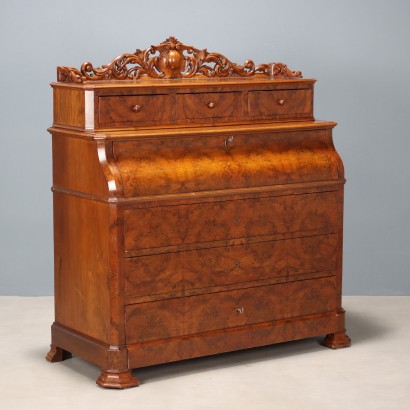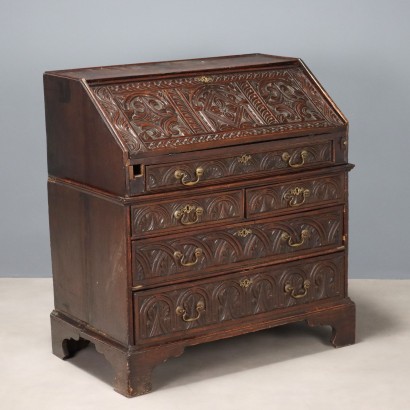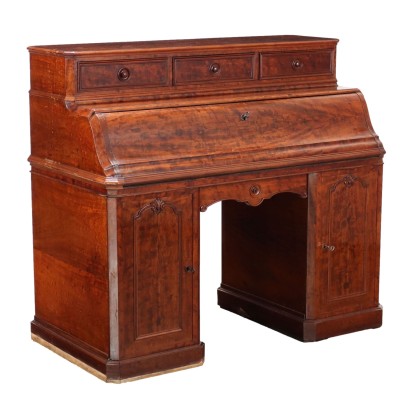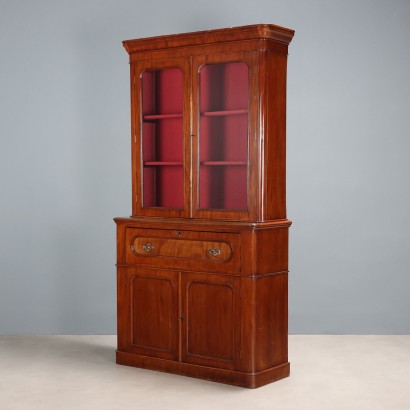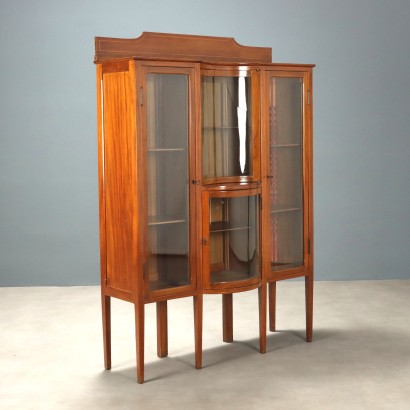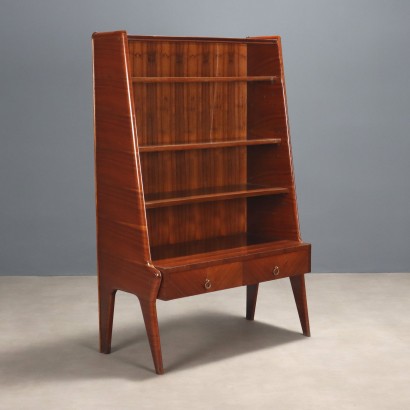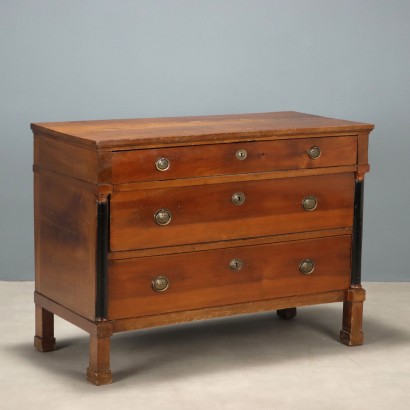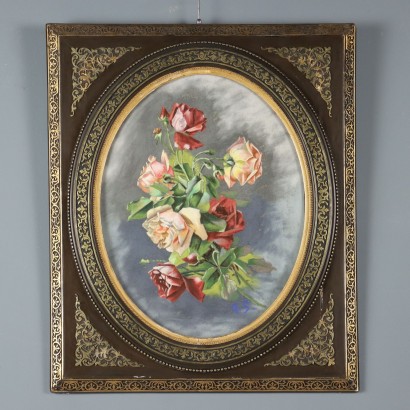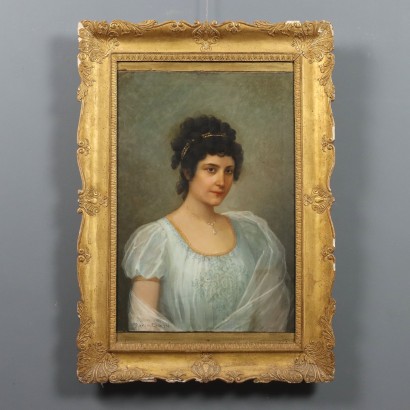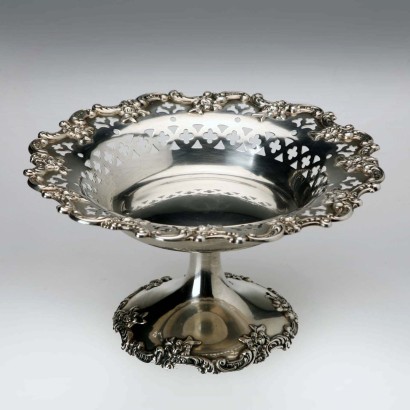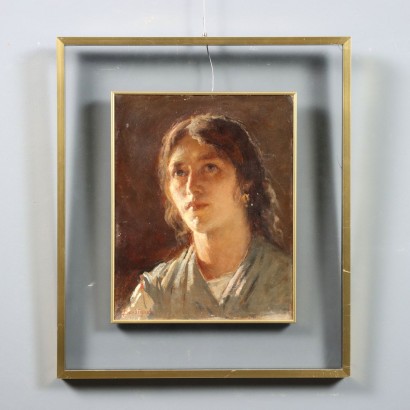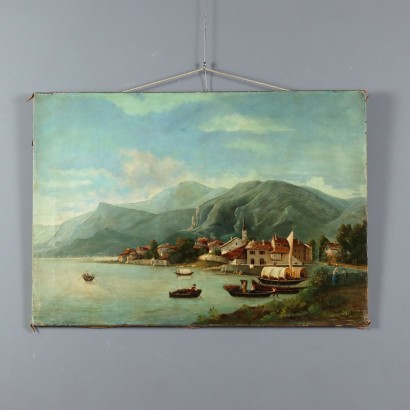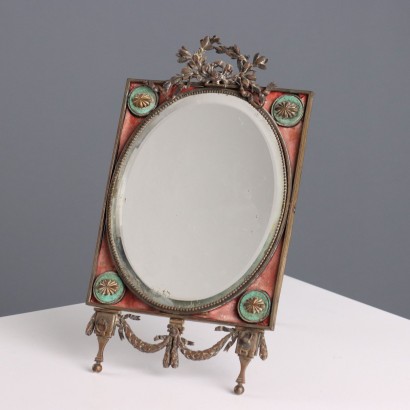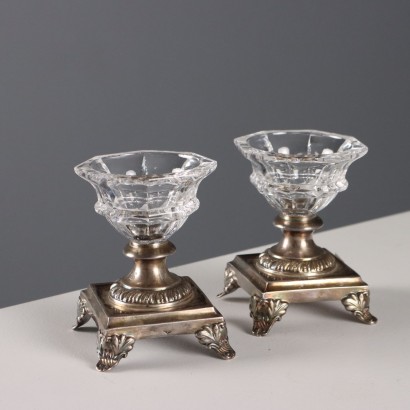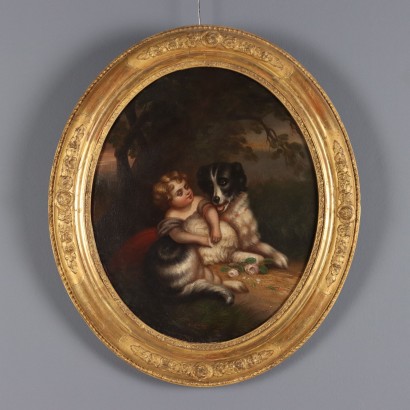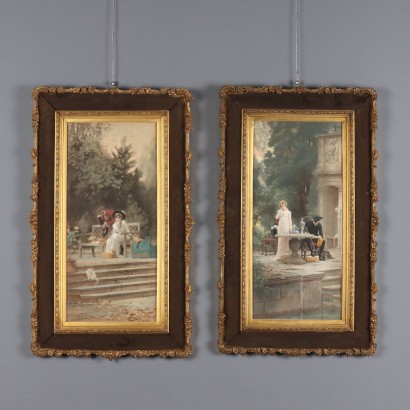Antique Flap Cabinet Biedermeier Mahogany Austria XIX Century - Austro-Hungarian Empire, XIX Century
Features
Austro-Hungarian Empire, XIX Century
Style: Biedermeier (1815-1848)
Age: 19th Century / 1801 - 1900
Origin: Austro-Hungaric Empire
Main essence: Mahogany
Description
Biedermeier mahogany and burl desk. Three-drawer display case with carved balustrade, four drawers in front, the first of which has a pull and flap, concealing an internal writing desk with a leather insert in the top, a four-drawer cabinet, one with a spring-loaded opening, and an open central compartment. Austro-Hungarian Empire, mid-19th century.
Product Condition:
This item requires restoration and polishing due to age and wear. We strive to present the actual condition of the piece as accurately as possible with the photos. If any details are unclear from the photos, the description will prevail.
Dimensions (cm):
Height: 135
Width: 126
Depth: 54
Additional Information
Style: Biedermeier (1815-1848)
The Biedermeier style is a style that characterizes German and Austrian furniture between approximately 1815 (Congress of Vienna) and 1848 (beginning of the revolutionary movements).Its main characteristics are essentiality and functionality, and the home destination.
Biedermeier first took on a derogatory connotation: the word derives from “Bieder”, or “simpleton” and from “Meir”, one of the most common German surnames at the time and was the name of a “simpleton” character in a comedy by Ludwig Eichrodt.
This term was intended to indicate the conservative petty bourgeois, concerned only with his own family reality.
Although in a derogatory way, the term represents exactly the new socio-political situation in which the bourgeois is forced or resigned to give up the yearnings for democracy and freedom.
The center of life becomes, therefore, the house, no longer characterized by unbridled luxury but, comfortable and practical.
Consequently, Biedermeier furniture is functional, comfortable and easily made products.
The style is an evolution of the Empire style towards greater simplification, without ornamental and antique elements, lighter, linear and curved shapes, lighter colors.
Discover more about the Biedermeier style with our insights:
Biedermeier, the comfortable and practical style
Biedermeier, when a furnishing style transforms a room
FineArt: group of eight Biedermeier appliques, Vienna, 1820-1830
FineArt: Biedermeier Reifenluster, Vienna, ca. 1820-1830. - Viennese chandelier
The Austrian taste of Baroque
The Empire style and the birth of Biedermeier
Vienna in the 19th century and the Biedermeier style
Age: 19th Century / 1801 - 1900
19th Century / 1801 - 1900Main essence: Mahogany
It is one of the most precious and sought-after woods in cabinet making. It was discovered in Central America around 1600 and began to be imported to England in the 1700s. Much appreciated for its hardness and indestructibility, it became widespread following the blocking of walnut exports from France in 1720 and the consequent elimination of English import duties on mahogany from the colonies in America and India. The most valuable version comes from Cuba, but it became very expensive. At the end of the 18th century it began to be used also in France in Louis XVI, Directory and Empire furniture, its diffusion declined starting from when Napoleon, in 1810, forbade its import. It was generally used in the manufacture of elegant furniture, due to its characteristics and beautiful grain.Other customers have searched:
Dai un'occhiata anche ai nostri approfondimenti sul blog e alle presentazioni dei prodotti FineArt:
Leggi di più
Un cassettone a ribalta, espressione del gusto veronese di pieno SettecentoSecrétaire, il mobile con i nascondigli
Scrittoio a dorso d'asino, Piacenza, metà XVIII secolo
Cassettone a ribalta, Roma, secondo quarto XVIII secolo
Ribalta a urna, Milano metà XVIII secolo
Secrétaire, Bottega Francesco Maggiolini, primo quarto XIX secolo
Secrétaire, “Bottega dei fondi verdi”, inizi XIX secolo
Trumeau con anta a ribalta, Queen Anne, Inghilterra 1705 ca.
Sull'antiquariato in generale dai un'occhiata anche a:
Classic Monday: da un pezzo dei nostri magazzini alla storia dell'antiquariato
L'antiquariato dalla A alla Z: il Dizionario dell'Antiquariato
Il dizionario dell'antiquariato - Lastronatura
Il dizionario dell'antiquariato - Mascherone
Il dizionario dell'antiquariato - Natura morta
Il dizionario dell'antiquariato - Opificio
Il dizionario dell'antiquariato - Pastiglia
Il dizionario dell'antiquariato - Savonarola
Il dizionario dell'antiquariato - Rosone
Intaglio barocco con motivo a ricciolo
Product availability
The product can be seen at Cambiago
Immediate availability
Ready for delivery within 2 working days from ordering the product.

